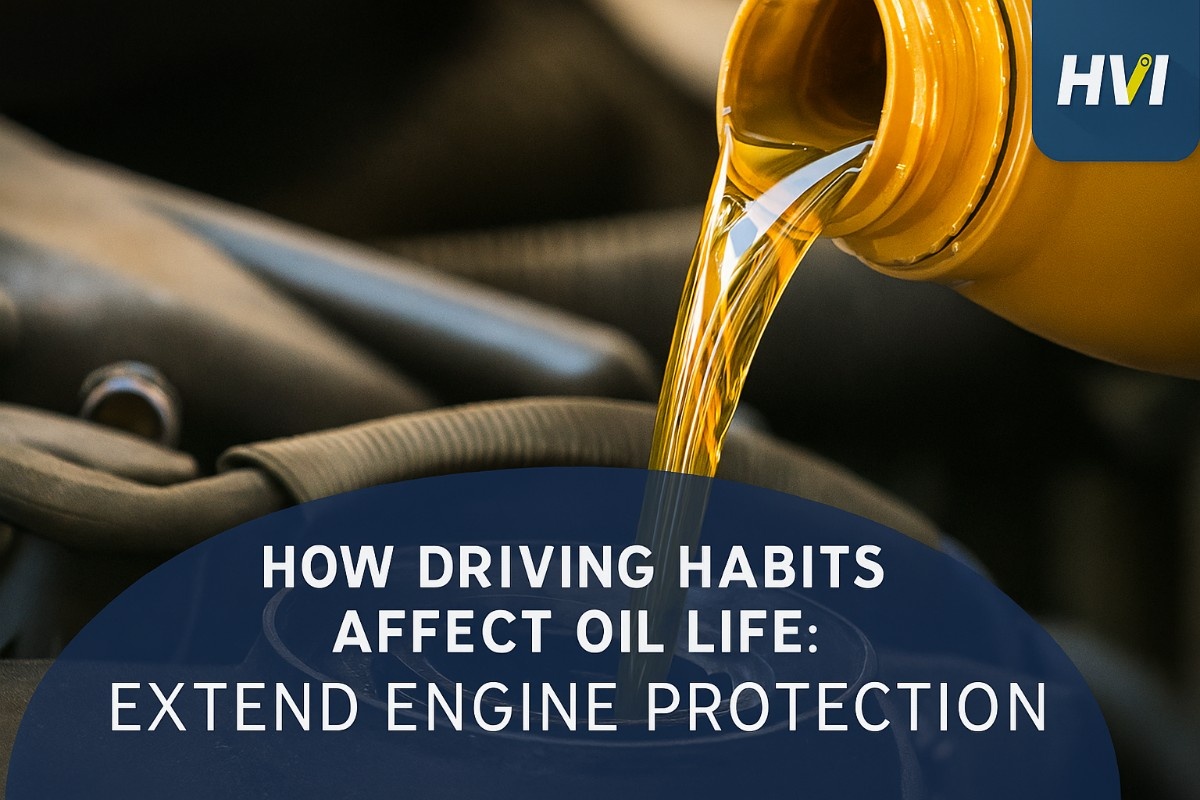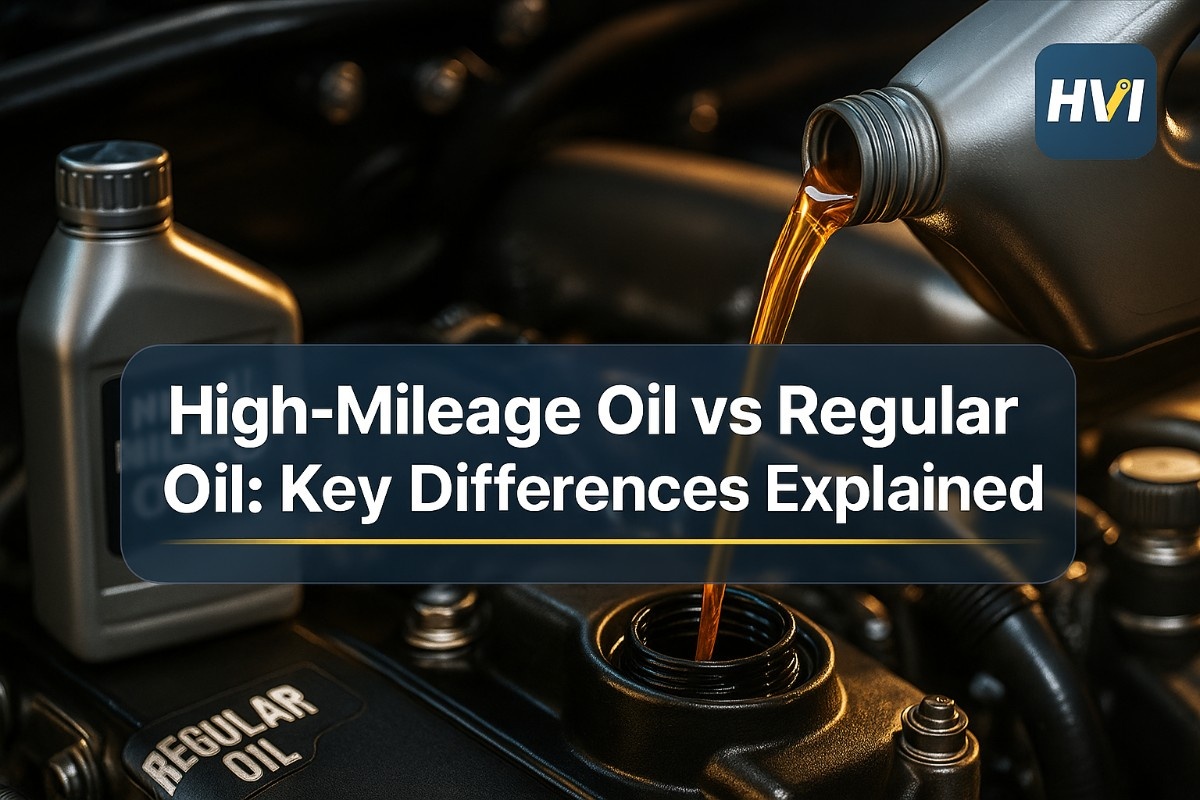That 15-minute commute through stop-and-go traffic ages your oil faster than a 2-hour highway road trip—a reality that surprises most drivers and explains why some engines last 300,000 miles while others struggle at 150,000. Your daily driving habits influence oil degradation more than mileage alone, with severe driving conditions reducing oil life by 50% or more compared to ideal conditions. Track your driving patterns and maintenance needs to understand exactly how your habits affect oil life, because the way you drive determines whether you're protecting your engine or slowly destroying it.
The Driving Habits Reality Check
Think your driving is "normal"? Most drivers underestimate how their habits affect oil life.
What "Severe Service" Actually Means (You Probably Qualify)
Car manufacturers define "severe service" driving conditions that require more frequent oil changes. The surprise? Most Americans drive under severe conditions without realizing it—and that "normal" 7,500-mile oil change interval doesn't apply to them.
Check Your Driving Reality
If ANY of these apply to you, you're in "severe service" territory:
Result: If you checked even ONE box, reduce your oil change interval by 30-50%. Three or more? You may need changes at half the "normal" interval.
Know Your Actual Oil Change Needs Based on How You Drive
Stop guessing—track driving patterns to determine optimal maintenance intervals.
How Different Driving Habits Affect Your Oil
Every driving habit impacts oil in specific ways. Understanding these effects helps you adjust maintenance schedules and driving behavior to maximize engine protection. For fleet-wide habit tracking, explore our digital monitoring solutions.
Short Trips (Under 10 Miles)
What Happens: Engine never reaches full operating temperature. Moisture and fuel contaminate oil instead of evaporating. Acids form and attack engine components.
Real Life Example: Your daily 6-mile commute to work seems short, but those 12 miles of cold-engine driving per day cause more oil degradation than a 50-mile highway trip.
Minimize Impact: Once weekly, take a 20+ minute highway drive to fully heat the engine and burn off contaminants.
Stop-and-Go City Traffic
What Happens: Constant acceleration and braking create thermal cycling that breaks down oil faster. Low speeds mean less airflow for cooling. More time in gear means more contamination from combustion byproducts.
Real Life Example: That frustrating rush-hour crawl through downtown isn't just wasting your time—every mile in traffic equals roughly 3 miles of highway wear on your oil.
Minimize Impact: Use synthetic oil designed for stop-and-go conditions. Consider alternate routes or timing to reduce traffic exposure.
Extended Idling
What Happens: Engine runs but vehicle isn't moving. Oil circulates without full temperature regulation. Fuel dilution increases as unburned fuel enters crankcase. Contaminants accumulate faster.
Real Life Example: Waiting in the school pickup line for 20 minutes with the engine running? That's equivalent to driving 7-10 miles in terms of oil wear—without going anywhere.
Minimize Impact: Turn off engine if idling more than 60 seconds. Modern engines don't need "warming up" beyond 30 seconds before gentle driving.
Cold Weather Driving
What Happens: Cold oil flows poorly, providing less protection during startup. Engine takes longer to reach operating temperature. More moisture condenses in crankcase before evaporating.
Real Life Example: Living in Minnesota means your engine spends more time in the "wear zone" during winter—those first 5 minutes of every cold start cause more wear than the next 50 miles.
Minimize Impact: Use synthetic oil rated for cold temperatures (0W-20 or 5W-30). Consider a block heater for extreme cold. Avoid hard acceleration until engine warms.
Hot Weather / Summer Driving
What Happens: High ambient temperatures push oil closer to breakdown threshold. A/C compressor adds engine load. Oil oxidizes faster in heat, forming sludge and losing viscosity.
Real Life Example: Arizona summers with 110°F temps mean your oil is already stressed before you add engine heat. That 7,500-mile interval should drop to 5,000 miles or less.
Minimize Impact: Park in shade when possible. Check oil level more frequently in summer. Consider switching to higher-quality synthetic in extreme heat.
Towing / Heavy Loads
What Happens: Increased load means higher engine temperatures and more stress on every component. Oil works harder to prevent metal contact. Thermal breakdown accelerates dramatically.
Real Life Example: Towing your boat to the lake every weekend? Those trips count as severe service. A 200-mile tow is equivalent to 400+ miles of normal driving for your oil.
Minimize Impact: Use heavy-duty or diesel-rated oil when towing frequently. Change oil immediately after extended towing trips. Monitor oil temperature if possible.
Highway Cruising
What Happens: Steady engine speed allows consistent lubrication. Full operating temperature burns off moisture and contaminants. Optimal airflow keeps temperatures stable. Oil works as designed.
Real Life Example: Your weekend road trip to see family 150 miles away is actually better for your oil than a week of 5-mile commutes—even though it's more miles.
Maximize Benefit: Use cruise control when safe to maintain steady RPMs. These trips help "reset" oil condition after weeks of severe-service driving.
Moderate Climate Driving
What Happens: Temperatures between 40°F-85°F allow oil to perform optimally without cold-start penalties or heat breakdown. Engine reaches operating temperature quickly and stays there.
Real Life Example: Living in San Diego's mild climate means your oil isn't fighting extreme conditions—one of the few situations where "normal" intervals actually apply.
Maximize Benefit: You can likely use the manufacturer's standard interval. Still watch for other severe-service factors like short trips or traffic.
The Science: How Driving Habits Degrade Oil
Understanding the chemistry behind oil degradation helps you make smarter decisions about maintenance and driving behavior.
Thermal Breakdown
Caused By: High temperatures, towing, aggressive driving
Oil molecules literally crack apart when overheated. Once broken, they can't be reassembled—the oil permanently loses viscosity and protection capability. Synthetic oils resist thermal breakdown 2-3x longer than conventional.
Oxidation
Caused By: Heat, time, exposure to air
Oil reacts with oxygen, forming acids and sludge. This process accelerates exponentially with temperature—every 18°F increase doubles oxidation rate. The acids attack bearings and seals while sludge clogs passages.
Fuel Dilution
Caused By: Short trips, cold starts, idling
Unburned fuel seeps past piston rings into oil. In short trips, the engine never gets hot enough to evaporate this fuel out. Diluted oil loses viscosity and can't maintain protective film between metal surfaces.
Moisture Contamination
Caused By: Short trips, cold weather, humidity
Combustion produces water vapor. Normally it evaporates when the engine heats up. Short trips trap moisture in the oil, creating acids and promoting rust. As little as 0.1% water can reduce bearing life by 50%.
Additive Depletion
Caused By: All driving—it's unavoidable
Oil additives (detergents, anti-wear agents, dispersants) are consumed as they work. Severe conditions deplete additives faster. Once depleted, even "clean-looking" oil can't protect your engine properly.
Particulate Contamination
Caused By: Dusty roads, poor filtration, wear
Microscopic particles from combustion, wear metals, and external contaminants accumulate in oil. These particles act as abrasives, accelerating wear throughout the engine even when oil otherwise looks fine.
Track How Your Specific Driving Affects Oil Life
Digital monitoring correlates driving patterns with maintenance needs across your fleet.
Real Driver Scenarios: What Your Oil Life Actually Looks Like
See how common driving patterns translate to real oil life recommendations. Find the scenario closest to your situation.
The Suburban Commuter
Sarah from ChicagoDriving Pattern: 8-mile commute, heavy traffic, drops kids at school, grocery runs on weekends
Severe Factors: Short trips (Yes) | Stop-and-go (Yes) | Cold winters (Yes) | Some idling (Yes)
The Highway Warrior
Mike from ColoradoDriving Pattern: 45-mile highway commute each way, occasional mountain passes, moderate climate
Severe Factors: Some hill climbing (Yes) | But mostly highway cruising (Good)
The Weekend Hauler
Dave from TexasDriving Pattern: Light weekday driving, tows RV or boat most weekends, hot summer climate
Severe Factors: Towing (Yes) | Extreme heat (Yes) | Heavy loads (Yes)
The City Dweller
Jessica from NYCDriving Pattern: Drives only 3,000 miles/year, mostly short trips in city traffic, car sits for days
Severe Factors: Very short trips (Yes) | Constant stop-and-go (Yes) | Long sitting periods (Yes)
The Delivery Driver
Carlos from MiamiDriving Pattern: 150 miles daily in city, constant stops, hot humid climate, engine runs all day
Severe Factors: Extreme stop-and-go (Yes) | Heat (Yes) | Extended running (Yes) | Humidity (Yes)
The Retiree
Barbara from FloridaDriving Pattern: 5,000 miles/year, mix of short errands and occasional long trips to visit family
Severe Factors: Some short trips (Yes) | Hot climate (Yes) | But regular longer trips help
10 Tips to Extend Oil Life Through Better Driving Habits
Combine Short Trips
Instead of three separate 3-mile errands, do them in one 9-mile trip. Your engine stays warm between stops, reducing cold-start contamination by up to 70%.
Take a Weekly "Oil Cleanse" Drive
Once a week, drive 20+ minutes on the highway. This fully heats the oil, evaporating moisture and fuel contamination accumulated from short trips.
Minimize Idling Time
Turn off the engine if stopped for more than 60 seconds. Idling wastes fuel and ages oil without moving you anywhere. Modern engines don't need extended warm-ups.
Drive Gently When Cold
Avoid hard acceleration for the first 5-10 minutes of driving. Cold oil can't protect as well—aggressive starts cause 3x more wear than gentle warm-up driving.
Use Quality Synthetic Oil
Synthetic oil resists breakdown 2-3x longer than conventional under severe conditions. The extra cost is offset by extended intervals and better protection.
Check Oil Level Monthly
Low oil runs hotter and degrades faster. Keeping oil at the proper level reduces thermal stress and ensures adequate protection. Takes 2 minutes.
Park in Shade When Possible
A car parked in direct summer sun can reach 150°F+ inside. This heat transfers to engine oil, accelerating oxidation even when not running.
Adjust Intervals to Your Actual Driving
Forget the sticker in the windshield—calculate your interval based on YOUR driving conditions. Severe service may need 50% shorter intervals.
Consider Oil Analysis
For $25-35 per sample, oil analysis tells you exactly when YOUR oil needs changing based on actual condition—not generic mileage guidelines. Optimizes intervals perfectly.
Track and Learn Your Patterns
Document your driving habits and maintenance. Over time, you'll understand exactly how your specific patterns affect oil life—enabling data-driven decisions. Digital tracking systems make this effortless.
Oil Life Monitoring Systems: Can You Trust Them?
Many modern vehicles have oil life monitoring systems that calculate remaining oil life based on driving conditions. Here's what you need to know about trusting (or not trusting) these systems.
What They Get Right
- Track engine temperature cycles accurately
- Account for short trips vs highway driving
- Adjust for aggressive vs gentle acceleration
- Factor in time since last change
- Better than fixed mileage intervals for most drivers
What They Miss
- Can't detect actual oil condition (contamination, viscosity)
- Don't account for oil quality differences
- May not fully weight extreme conditions
- Calibrated for "average" driver, not your specific patterns
- Can be overly optimistic in severe conditions
Our Recommendation
Use oil life monitors as a starting point, not gospel. If you know you drive in severe conditions, change oil when the monitor reads 40-50% life remaining rather than waiting for 0%. When in doubt, oil analysis provides definitive answers about your specific oil condition.
Optimize Oil Changes Based on Your Actual Driving Patterns
Stop guessing—digital tracking matches maintenance to how you really drive.



